animal kingdom
1/155
Earn XP
Description and Tags
Name | Mastery | Learn | Test | Matching | Spaced |
|---|
No study sessions yet.
156 Terms
Undifferentiated middle layer is seen in
diplobastic
ex of diplobastic phylum
coelenterates, ctenophora
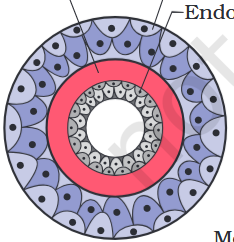
diplobastic
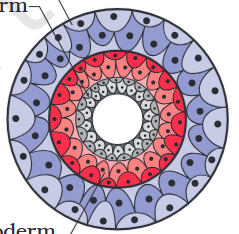
triplobastic
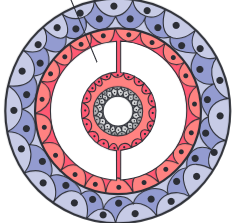
coelomate
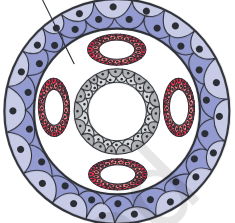
pseudocoelomate
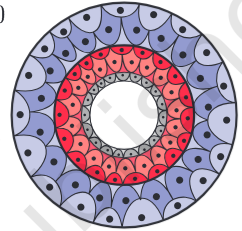
acoelomate
ex of coelomates
annelids, molluscs, arthropods, echinoderms, hemichordates, chordates
ex of pseudocoelomates
aschelminthes
ex of acoelomates
platyhelminthes
the body is externally and internally divided into segments with a serial repetition of at least some organs it is called
metamerism
ex of metamerism
annelids, arthropods, chordata
Notochord is a _______ derived rod-like structure formed on the dorsal side during embryonic development in some animals
mesodermally
ex of non chordates
porifera, colenterata, ctenophora, platyhelminthes, aschelminthes, annelida, arthropoda, echinodermata
water canal system
porifera
water enters thru ____ into the body of sponges
ostia
water exits thru ____from the body of sponges
osculum
collar cells of sponges aka
choanocytes
the body of sponges are supported by
spicules
identify the phyla from the description
asymmetric animals
generally marine
fertilisation is internal and indirect development
porifera
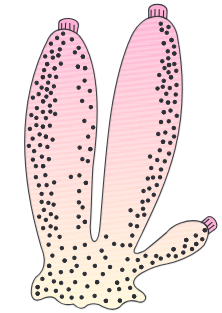
sycon
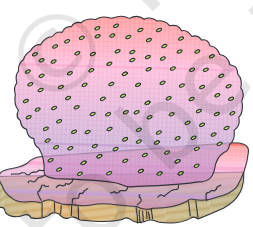
euspongia

spongilla
spongilla aka
freshwater sponge
euspongia aka
bath sponge
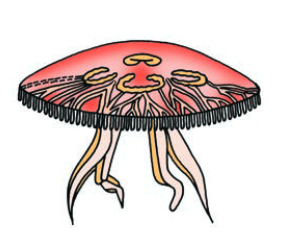
aurelia
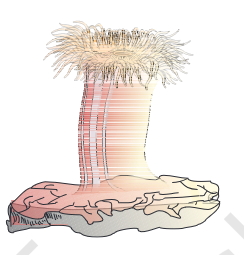
adamsia
the body and tentacles of cnidaria have
cnidoblast or cnidocytes
cnidocytes contains stinging capsule aka
nematocysts
cnidarians have skeleton composed of calcium carbonate
corals
cylinderical, sessile form like hydra, adamsia
polyp
umbrella shaped, free swimming, like aurelia or jelly fish
medusa
polyp → medusae
asexually
medusae → polyp
sexually
identify the phyla from the description
radially symmetrical
diplobastic
digestion both intra and extracellular
can be free swimming or sessile
coelenterata
the ability to exists in both forms(polyp and medulla) and exhibit alternation of generation
metagenesis
ex of Coelenterata showing metagenesis
obelia
the only phylum to have bioluminescence
ctenophora
identify the phyla from the description
diploblastic
Exclusively marine
radial symmetry
presence of comb plates
digestion both extra and intracellular
fertilisation is external and indirect development
ctenophora
pleurobrachia is an example of
ctenophora
no of rows of comb plates present
8
which organ help in osmoregulation and excretion in phylum platyhelminthes
flame cells
identify the phyla from the description
bilaterally symmetrical
mostly found as endoparasite in animals and humans
triploblastic
fertilisation internal and development is through many larval stages
platyhelminthes
fasciola is an example of
platyhelminthes
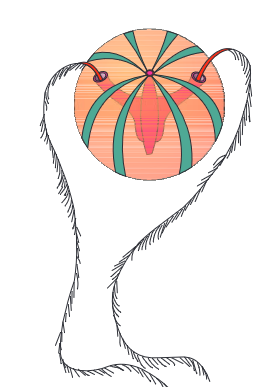
pleurobrachia
which phylum’s organism has muscular pharynx
aschelminthes
identify the phyla from the description
parasitic in plants and animals
can be free living, aquatic or terrestrial
bilateral symmetry
triploblastic
alimentary canal is complete
dioecious
fertilisation internal, development may be direct or indirect
aschelminthes
ancyclostoma is an example of
aschelminthes
aquatic annelids have lateral appendages called parapodia, present in
nereis
identify the phyla from the description
may be aquatic, terrestrial, free living or parasitic
bilateral symmetry
triploblastic
presence of metameres
Longitudinal and circular muscles present for locomotion
presence of closed circulatory system
presence of paired ganglia connected by lateral nerves to double ventral nerve cord
annelida
which organ help in osmoregulation and excretion in phylum annelida
nephridia
hirudinaria is an example of
annelida
which phylum has a variety of respiratory organs like gills, book gills, book lungs, tracheal system found in its organism
arthropoda
balancing organ of arthropoda
statocysts
which organ help in excretion in phylum arthropoda
malpighian tubules
identify the phyla from the description
triploblastic
bilateral symmetry
body segmented into 3 parts
open circulatory system
mostly dioecious
fertilisation usually internal and development may be direct or indirect
mostly oviparous
arthropoda
king crab aka
limulus
The space between the hump and the mantle is called the mantle cavity in
which feather like ___ is present
gills
in which phylum gills perform the function of both respiration and excretion
mollusca
which phylum has file like rasping organs for feeding
mollusca
file like rasping organ for feeding present in 2nd largest phylum is known as
radula
identify the phyla from the description
bilateral symmetry
triploblastic
unsegmented body with distinct head, muscular foot, visceral hump
anterior head region has sensory tentacles
dioecious
oviparous
indirect development
mollusca
pearl oyster
pinctada
cuttlefish
sepia
squid
loligo
sea hare
aplysia
tusk shell
dentalium
chiton
chaetopleura
echinodermata have mouth on
ventral side
echinodermata have anus on
dorsal side
water vascular system
echinodermata
dentalium is an example of
mollusca
identify the phyla from the description
presence of endoskeleton
all are marine
radial symmetry in adults
triploblastic
complete digestive system
fertilisation usually external with indirect development with free swimming larva
echinodermata
excretory system is absent for which phylum
echinodermata
Star fish
Asterias
Sea lily
Antedon
Sea cucumber
Cucumaria
Brittle star
Ophiura
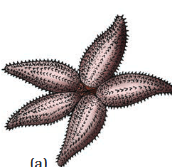
Asterias
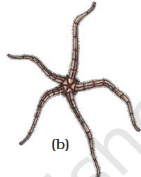
Ophiura
identify the phyla from the description
bilateral symmetry
triploblastic
open circulatory system
body divided into anterior proboscis, collar, long trunk
respiration through gills
fertilisation is external and indirect development
hemichordata

Balanoglossus
Balanoglossus is an example of
hemichordata
Saccoglossus is an example
hemichordata
notochord is present _____ to nerve cord(acc to NCERT)
ventral
nerve cord is present _____ to notochord
dorsal
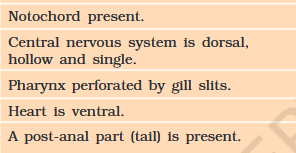
what does this describe
chordates

what does this describe
non-chordates
tunicata aka
urochordata
protochordates include urochordata & ______
cephalochordata
notochord is present only in larval tail, this is a feature of which sub-phylum
urochordata
notochord extends from head to tail region and is persistent throughout their life, this is a feature of which sub-phylum
cephalochordata
Ascidia, Salpa, doliolum is an example of
urochordata
Branchiostoma is an example
cephalochordata
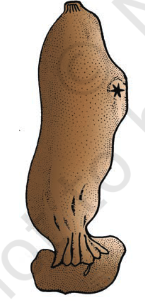
Ascidia
amphioxus or lancelet aka
Branchiostoma
possess notochord during the embryonic period, this is a feature of which sub-phylum
vertebrata
in chordata _____ is used for osmoregulation and excretion
kidneys
identify the class from the description
always ectoparasite on fishes
6-15 pairs of gill slits
sucking and circular mouth without jaws
no scales on body
Cartilaginous skeleton
closed circulation system
cyclostomata
animals of which class have a tendency to migrate to freshwater for spawning and die within a few days after spawning
cyclostomata